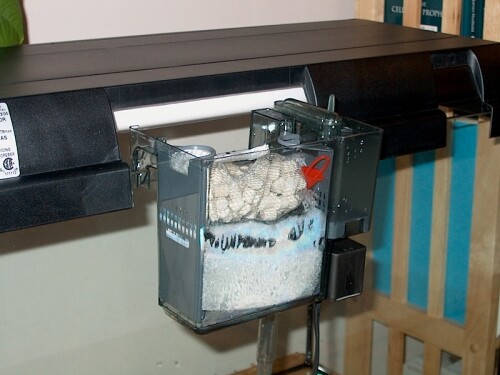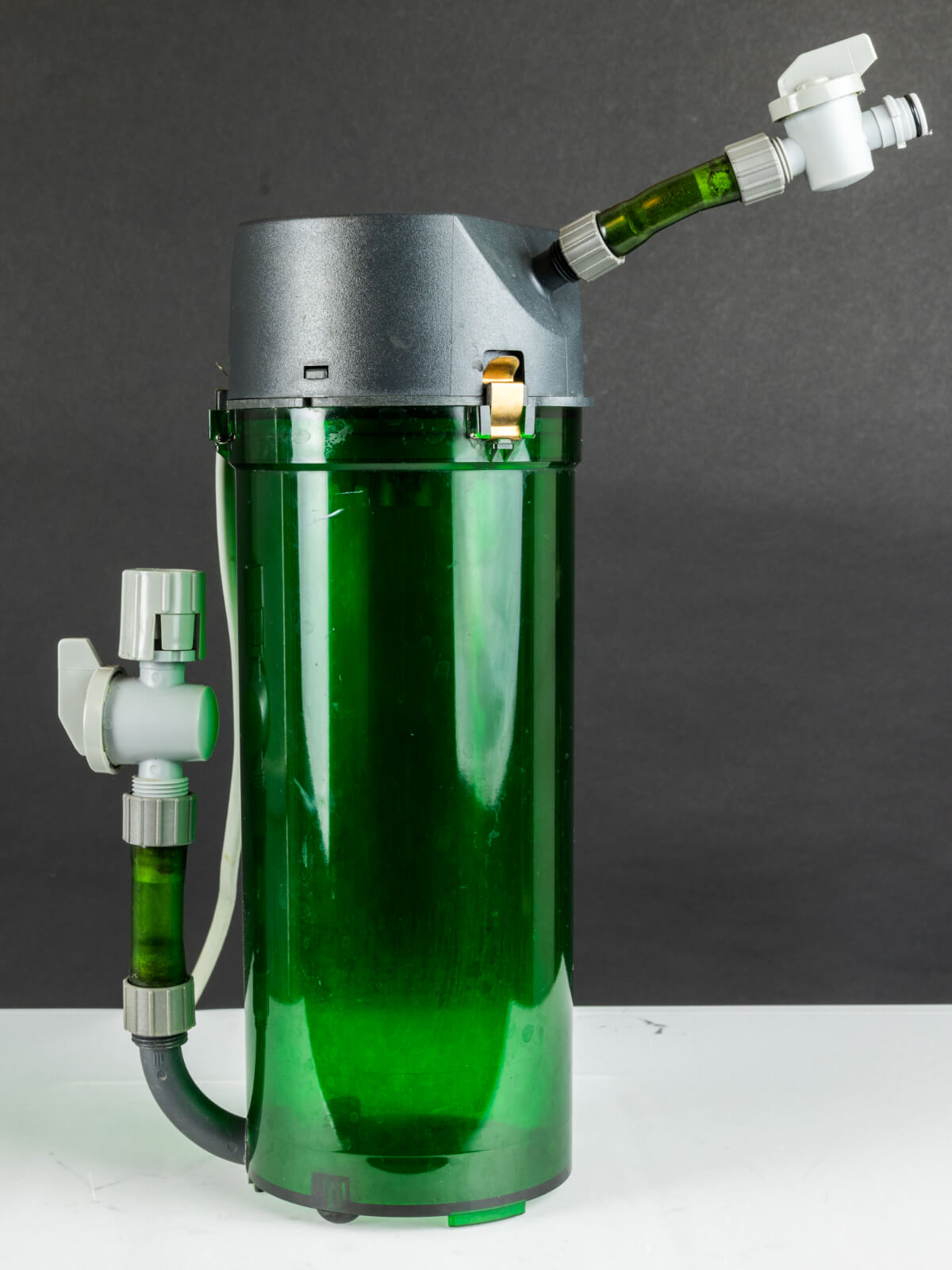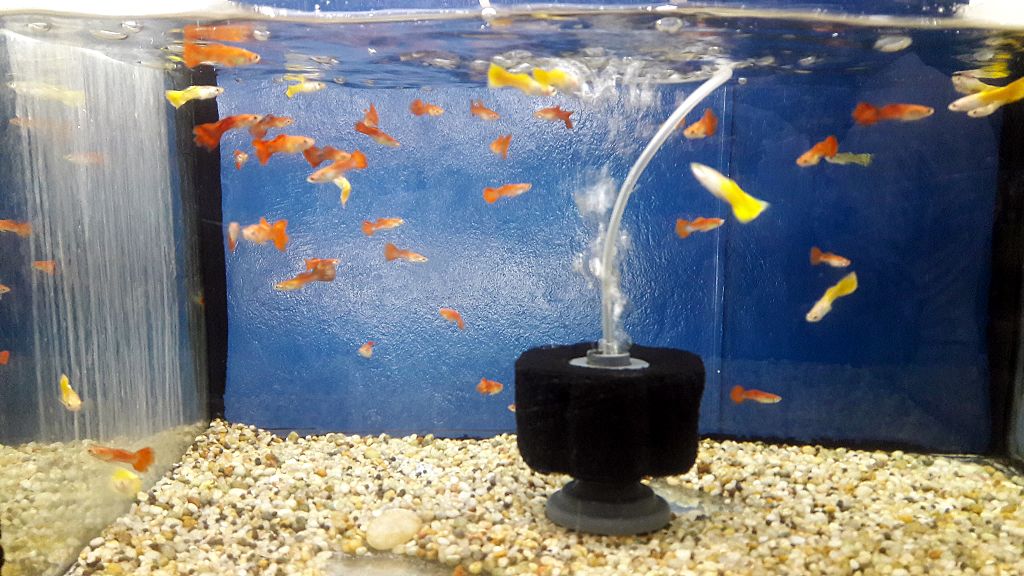Best Filtration for Planted Aquariums
Posted by on 01/31/2024
If you're looking to set up an aquarium, then it's important to have a reliable filtration system. Not only do aquarium filters harbor beneficial microbial life, but they also supply water movement and surface agitation, a key element to aquatic plant keeping.
If you're looking to set yourself up for success with a planted tank, then you'll want to choose the best filtration system for your aquarium setup. In this post, we're going to recommend some of our favorite types of filtration systems for planted aquariums.
Table of Contents
HOB Filters
HOB Filters, short for hang-on-back, are mechanical filters that hang on the rim of an aquarium. Filter media is placed within a HOB filter's chamber, and a small propeller is in charge of pulling aquarium water from a filter intake and through the filter media. An excess of water allows the water to flow out from the HOB filter and back into the aquarium.
HOB Filters are affordable and effective, but some hobbyists don't like the look of these filters, as they add something mechanical to a planted aquarium.
HOB Filters are great starter filters for those who don't want to spend a lot of money, we've even seen hobbyists use multiple HOB filters in larger-sized tanks (50+ gallons).
Since the water from the HOB filter breaks the water's surface, a HOB promotes gaseous exchange, an essential part of aquarium keeping.

Canister Filters
Canister Filters command a high price tag, and it's for good reason. These powerful filters are placed outside of an aquarium, often placed within an aquarium stand's cabinetry. A propeller sits inside the canister, which draws aquarium water from a filter intake and returns the filtered water through the filter's outtake.
Canister filters are reliable, and with bi-yearly maintenance, these filters can operate for many years at a time. They're also the best option for hobbyists looking to keep their planted aquariums looking appliance-free. Heaters, CO2, bubble counters, and more can all be placed within the aquarium cabinetry and connected to the canister filter, removing the need to place these devices inside of an aquarium.
Hobbyists should keep an eye on the strength of their canister filters, as they may not provide adequate surface agitation. If you can't see a nice ripple of water in your aquarium, you may need to add a powerhead.

Lily Pipes
Lily Pipes are glass or stainless steel inflows and outflows that attach to your canister filter tubing
Many canister filters come bundled with plastic intake and outtake pipes and tubing. Many of the more picturesque planted aquariums utilize Lily Pipes. They look much better than their plastic alternatives, but they do have some drawbacks that hobbyists should be aware of.
Lily Pipes tend to restrict the total amount of flow throughout your aquarium, as they can get clogged relatively easily. Hobbyists will need to keep an eye on their Lily Pipe intakes to make sure plants or any snail shells don't get stuck within the small intake openings.
Low-quality Glass Lily Pipes also tend to break easily. Routine maintenance often requires the planted tank hobbyist to disconnect the tubing from the glass lily pipe. Removing the tubing can be a difficult process (running it under hot water can make the process a bit easier) and you'll want to make sure that you handle the glass very carefully. More expensive Glass Lily Pipes tend to be a bit more durable.
We prefer the stainless steel lily pipes over the glass lily pipes due to their ease of maintenance and durability While Glass Lily pipes look fantastic, hobbyists will need to clean them more frequently to remove algae and decaying plant matter.
Walstad Method
For some Hobbyists, the best filtration is no filtration. This approach, known as the Walstad Method, was coined by microbiologist Diana Walstad. You'll need to provide your aquarium with potting soil, then cover it with a layer of crushed gravel or natural sand. You'll also need to plant heavily from the start by adding tons of low-light plants. Beginner-friendly plants are perfect for this method. Aim for 70% of the aquarium to be covered by some of these plants. The result is a well-balanced ecosystem, requiring the hobbyist to provide as little as one 50% water change every 6 months.
Sponge Filters
One of the simplest forms of filtration is the Sponge Filter. It's a relatively simple setup: an intake, powered by an air pump, draws aquarium water through a set of sponges that harbor beneficial bacteria. The sponge filter is the most cost-effective filter option, but it will occupy quite a bit of space in your aquarium aquascape. We see these filters used a lot in dedicated-breeding tanks, due to their low price point.

Our Favorite
Our favorite filtration system for planted aquariums is the canister filter. We think planted aquariums look best without any mechanical filtration, heaters, or bubble counters placed inside the tank. A canister filter allows you to keep all of your filtration organized and out of view from your aquascape.
Conclusion
That concludes our list of the best filtration systems for planted aquariums. Do you have a filtration system that works best for your setup? Let us know in the comments, and be sure to visit our marketplace where you can buy and sell with other hobbyists just like yourself.
December's Giveaways on Light Fish










